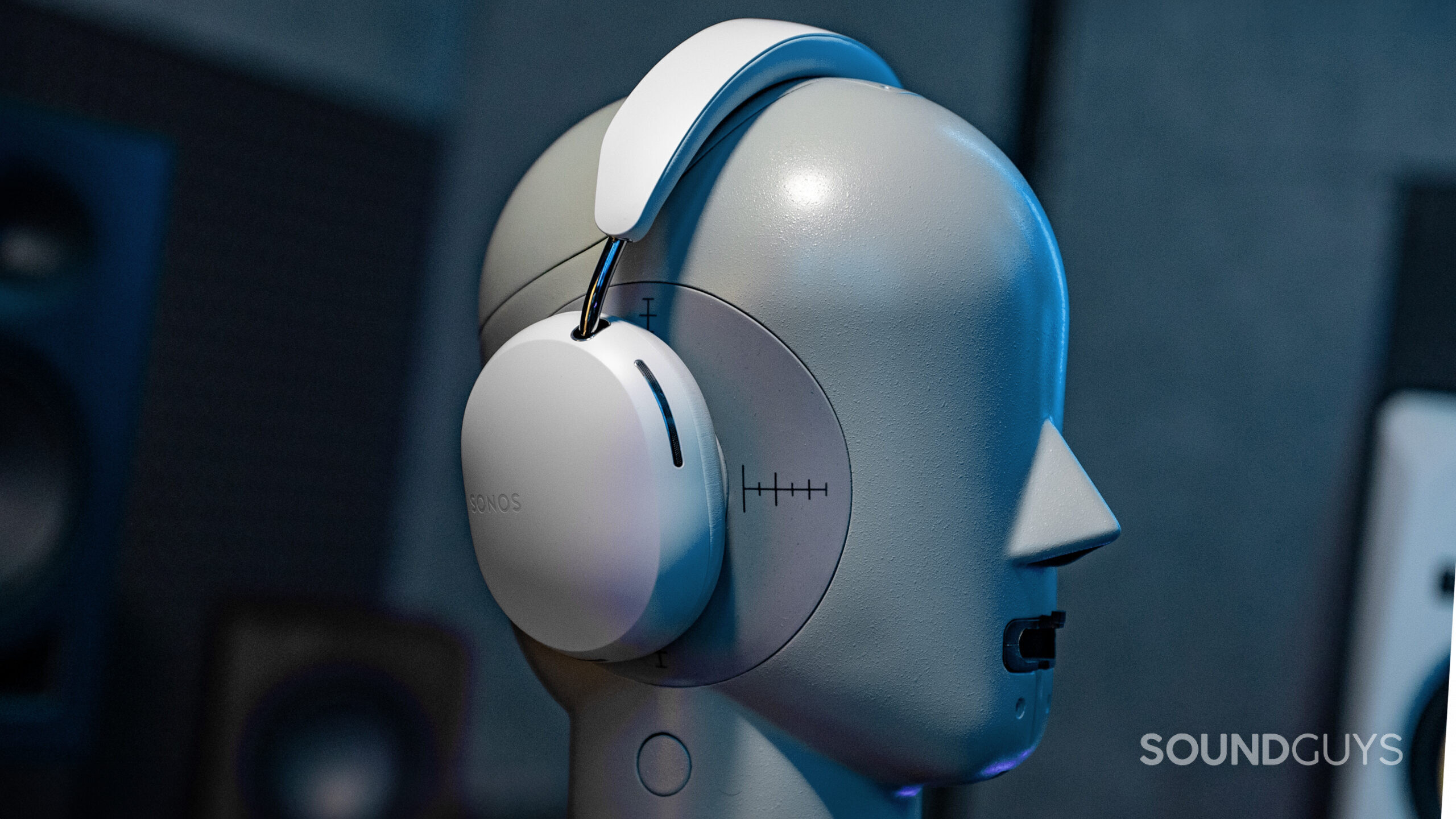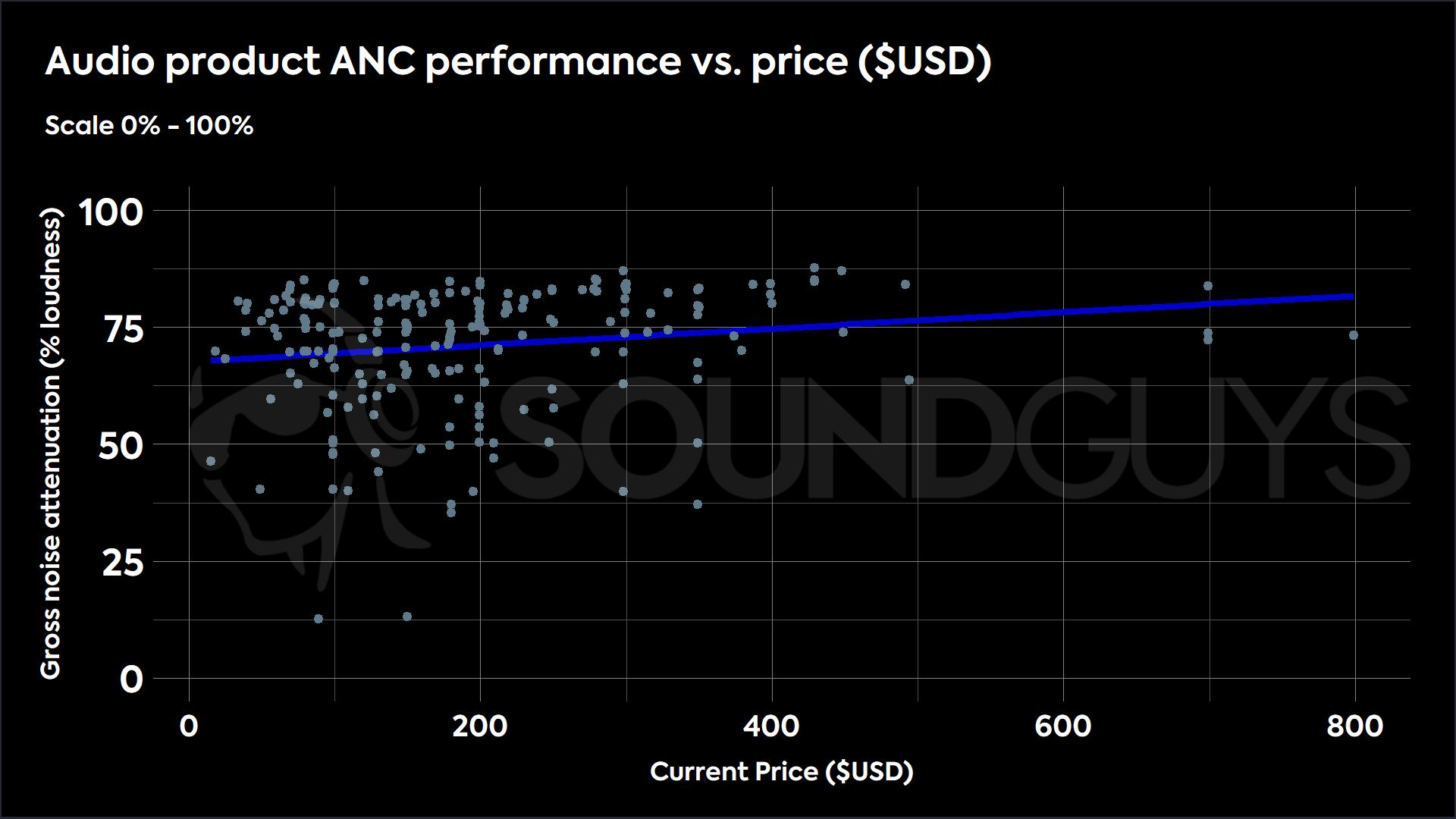All products featured are independently chosen by us. However, SoundGuys may receive a commission on orders placed through its retail links. See our ethics statement.
We tested 205 ANC headphones to find out if it's worth spending more
June 10, 2025

Buying headphones can be a tough task if you really care about performance-based qualities like noise canceling. If you really hate outside noise, getting a dud set of cans can be a horrible experience if you’re sensitive to junk sounds. We’ve tested 205 noise canceling products in the last couple years, so what does the data tell us? Is there any correlation between noise cancelation vs price? What’s the fastest way you can get the best noise canceling headphones for you?
How we test noise cancelation
When we test headphones’ noise cancelation, the process is relatively simple. Using the Bruel & Kjaer 5128 test head surrounded by a multi-channel setup in a controlled space, we are able to run a test sequence to gather the data we need to plot and compare.

After we’ve determined the best fit for the product on the head during our sound quality tests, we leave the headphones or earbuds in place while we start the ANC sequence. We blast the test head with shaped pink noise three times:
- First with the headphones or earphones in place with ANC on full.
- Second with the headphones or earphones off, or without ANC enabled at all.
- Third with the headphones or earphones removed from the test head.
We’re able to use these three recordings to plot out the effect of the ANC, the isolation of the products, and total noise attenuation when both are enabled. We show the charts so you can see where the headphones underperform — or excel — and to be able to compare to other products. But that’s not exactly how we score. For quick and dirty comparison purposes, we take the data and convert it to an average perceived reduction in loudness across all samples, expressed as a percentage. That way, headphones that don’t cancel any noise at all score a 0, and headphones that are “perfect” noise cancelers that can attenuate 100% of outside noise would net a 10.
Loading chart ...
Because decibels are a relationship of power, it can sometimes be a little confusing seeing really huge numbers in our charts, only to be told that it only provides a few percentage points more noise canceling. But we want our scores to reflect what you hear, and avoid as much opportunity for confusing people as possible. Since percentages are very easy to convert into a score out of 10 points with one decimal, you can do some mental math with our scores to get the average attenuation test results when reading our reviews.
What we found

At first glance, there seems to be a weak relationship between price and performance, but the variance is so huge that it’s likely that there’s another explanation or variable that’s required to truly predict ANC performance reliably. As it sits, price is a terrible way to predict ANC performance on its own, and ANC performance will not tell you much about the price unless you get a score under 4.
What seems to be throwing some of our data off are a set of outliers that are open-style earbuds with noise cancelation. Because the feature really doesn’t work all that well with unsealed products, the performance is predictably very poor. For example, the Samsung Galaxy Buds3 are unsealed, and offer very little effective ANC. Similarly, the Samsung Galaxy Buds Live did not offer extremely effective ANC either. Products like the Apple AirPods 4 with Active Noise Cancelling are a bit more effective, but only destroy about 54% of outside noise. Not quite a competitor for top of the market there, even if the product leads its category.
There are also a fair number of outdated models in this dataset that could give the impression that there’s a relationship where there is none. For example, pretty much every score under 5 is from a product that’s retired by a few years (eg, Razer Hammerhead True Wireless Pro), unless they’re open-ish earbuds. There are no contemporary ANC headphones that score less than 5 here.
What you should do
If you’ve read this far wondering what that one simple trick to getting the best ANC headphones is, it’s: “read sites that actually measure performance, like SoundGuys.” Not exactly an Earth-shattering conclusion, but because we measure these performance points rather than parrot anything a marketer says: you can take the objective data and compare that to other products instead of taking the word of someone you can’t trust.
It’s up to you what you’re willing to deal with and what doesn’t make the cut, but in general, most contemporary ANC products do pretty well at their task. But if you want to avoid the poor performers, you won’t be able to tell by their price tag alone: you’ll need to reference some third-party testing.
Thank you for being part of our community. Read our Comment Policy before posting.